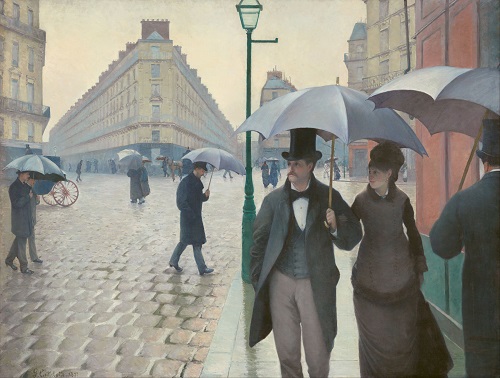Art Institute of Chicago’s Gustave Caillebotte’s Paris Street, Rainy Day painted in 1877 is a defining work for the art museum. Caillebotte’s career as a painter was brief, he started painting late in life and died young. He also did not need to sell his art as he was independently wealthy. Thus, exposure to his work was limited until the 1960s. Caillebotte was making art in a complicated time for the Western world. Paris is starting to transform into a modern city, and Caillebotte, like many of his Impressionist friends, sees these changes right before his eyes. In this article, we will aim to research and reflect on the differences Caillebotte has with other Impressionists.
We will analyze how Paris Street, Rainy Day describes the modern condition and life of the inhabitants of Paris, France in the late 19th century. We will investigate the extent of the differences between Caillebotte’s descriptions of Paris from his Impressionist counterparts in the art field, the indications of class on exhibition in Paris Street, Rainy Day, and the way Caillebotte shows that the modern world had become a complicated jumble. We will also shed light on how these changes affected society in France during this time.
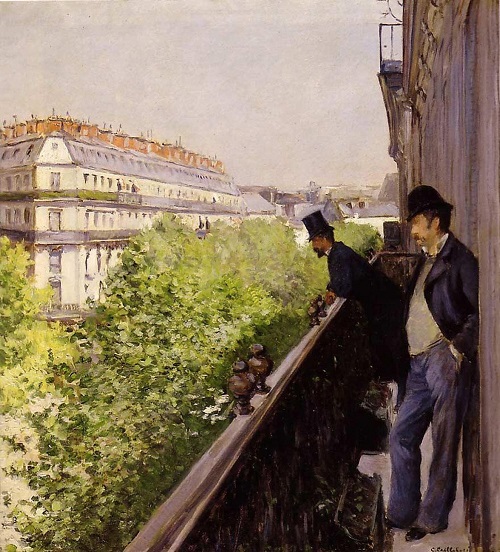
Gustave Caillebotte’s Bourgeoise Upbringing gave him the Confidence and Stability to Approach Life Vigorously
Gustave Caillebotte was born on August 19th, 1848. His father, Martial Caillebotte operated as a judge for the Tribunal de Commerce of the Seine. His father was also the beneficiary of a vast fortune in the military textile business. His mother, Céleste Daufresne, has a total of three children including Gustave Caillebotte. The artist’s childhood is indeed very comfortable in the wealthy and protective hands of his parents, and he eventually grows up to successfully attend law school in 1868 and achieves his license to practice law in 1870. The army draft, that same year, brings Caillebotte into the Franco-German War (War of 1870) and upon Germany’s victory, he starts to study art seriously.
He enrolls in the famous Academe des Beaux-Arts for a short period but finds much greater satisfaction in the studios of the “independent” artists or what we later came to be known as the Impressionists. While he does not show at the first Impressionist exhibit on April 15th, 1874, he does participate in the second exhibit on April 1st, 1876. It is in this exhibit that a total of two hundred and fifty-two pieces are shown including eight by Caillebotte. Amongst the most well-known pieces by the artist from this exhibit are The Floor Scrapers (1876, permanent collection of Musée d’Orsay, Paris), which is initially deemed by critics to be “too vulgar” for showing the urban proletariat in such a realist manner.
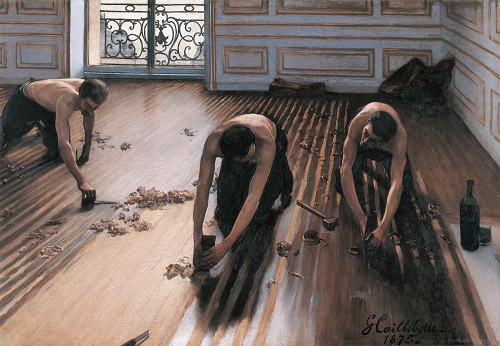
Industrialization Rapidly Changed the Fabric of Western Society in the Mid-19th Century
Many of the new inventions in Europe come from simple systems of production with long histories on the continent dating back to the middle ages and antiquity. An example of this is in the textile industry; before industrialization, cloth goods are produced by hand at home. These cloth goods make the market somewhat unstable and ill-equipped to deal with a consistent demand for clothes. Mothers teach their daughters to make cloth. This system of production is so ubiquitous with European culture that many French people and artists eventually romanticize the peasant lifestyle as they saw the effects of industrialization infringe on their world.
The invention of the famous spinning jenny by Englishman James Hargreaves was one such product that causes massive changes in society. This uproar against tradition is a hallmark of modern thought and art. Britain also saw the origins of increasingly efficient methods of producing iron-ore and steel which saw tremendous use in constructing things such as everyday goods, infrastructure, and ships. New advances in the early 19th century such as steam power lead to a rapidly growing network of railroads around the industrialized nations. Advances in engineering led to the creation of the Brooklyn Bridge in America and the Eifel Tower in France.
Paris’ Modernization Brought on Issues Among the Upper and Lower Classes
The rapid growth of cities leads to many issues for the poor and working class. Cities become overcrowded and rampant with diseases — the proletariat works for menial wages in dangerous factories. The new influx of goods is, however, leading to a better standard of living for the middle and upper class.
One can see this new upper middle class in Paris Street, Rainy Day quite clearly with the figures in the foreground. The man and his wife are walking dressed in the latest fashions. These clothes can be tied back to the earlier statement about the shift from handmade clothes to industrial spinning jenny’s. Factories in the city make the cloth that is on the man and woman. Unlike earlier paintings in Europe or Millet’s paintings of the countryside, each piece of clothing is not individually unique. One can also see the class differences in the bourgeoise couple as the quality of their clothes is much better than depictions of peasants in the countryside.
Also, of interest are the top hats that most of the men in the painting are wearing. Although most likely of different brands, one can see the standardization of their appearance. This unification points to the mass-produced nature and uniformity of the item. It may even be that the entire bourgeoise in this painting is standardized as they all seem to be generally dressed in the same outfits and with the same umbrellas. The proletariat face stressful situations in the newly industrialized cities. In Paris Street, Rainy Day they are seen doing more menial tasks such as carrying a ladder or opening a door. Perhaps it is possible that Caillebotte purposely pushes them into the background as a symbolic gesture of their lack of representation in the new Paris.
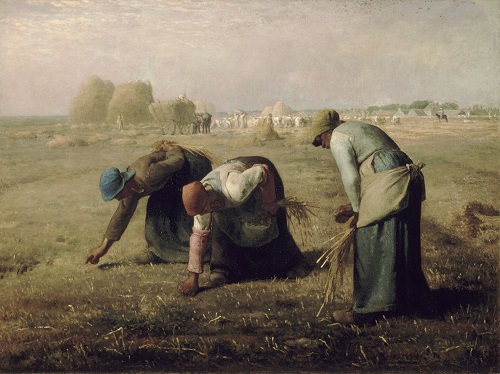
Artists and Philosophers Contemplate the Meaning of Life in the Modern World
The growth of the cities led to entirely new ways of thinking for the inhabitants of these nations, and people quickly realized that their old cultural ideas and ways of living are not suitable for the new world. Various theories are proposed to deal with the trauma of living in the modern world. The very term modernism denotes a large grouping of works that have the characteristics of a break with tradition, experimentation, a clamoring for the new, and an interest in experience over objective reality.
The advent of extremely dramatic changes to the fabric of society as a result of industrialization causes artists, writers, and philosophers to propose that all old forms of creation were irrelevant. A significant theory born out of the ideas permeating from this time is existentialism. Soren Kierkegaard is one of the founders of existentialism. Born into a wealthy family with an overbearing father, Kierkegaard was taught to cope with tremendous feelings of guilt and sadness from his melancholic father. This sense of guilt and depression would haunt the philosopher for his entire life. He was a diligent student who made top marks in his classes. Although his family was wealthy, he often wore plain clothes to school and was brought up under rather strict financial constraints. Kierkegaard’s ideas in many ways pointed to a fundamental shift in how people view the world. The bored looks on the faces of the bourgeoise couple walking can be seen to fit into the ideas proposed under existentialism.
Many philosophers of the movement are concerned with the boredom of modernity, and the task people make of deflecting it. In a broader sense, one could say that the couple is trying to come to grips with the lack of original meaning in their existence. This idea is a fundamental aspect of modernism.
“But in Modernism, that sense of bewilderment was taken seriously, and deeply felt. There was a notion that something was at stake. Mr. Clark, in his discussion of Modernism, invokes Max Weber’s characterization of the Modern as the ”disenchantment of the world.” – Edward Rothstein, The New York Times
Artistic Schools such as Impressionism were Born out of the Turmoil of the 19th Century
Of the many cultural movements that begin as a result of modernism, Impressionism is one of the most significant. The early advocates of Impressionism; Claude Monet, Alfred Sisley, Frederic Bazille, and Pierre-Auguste Renoir are all met with stiff opposition from the well-established academy with its Salon de Paris. The most significant aspect of Impressionism is the decision of the artists to move away from painting in the studio to work in the open air, otherwise known as “en plain air.” Painting outside is the result of technological advancements that allow paint for the first time to be put in tubes.
Their use of mixed and unmixed pure colors to portray an environment is considered revolutionary in their time. The new scientific discoveries influence Impressionists to understand that what the eye saw and what the brain understood to be the world are different. The artists were interested in this disconnect between the eye and mind.
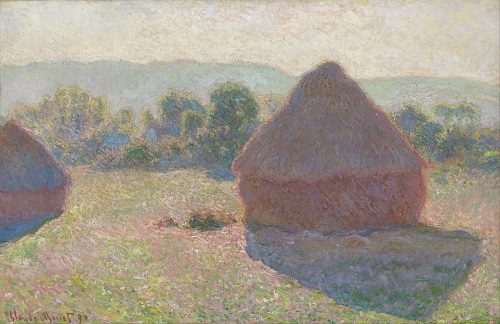
The infamous artist Gustave Courbet drastically influences the Impressionists. Courbet is a painter of the realism movement in France during the 19th century. Courbet becomes well known for his depiction of workers and peasants without the flourishes of a typical painting of the Romanticism school. His works are quite large; a scale usually reserved for historical paintings (large paintings generally portraying national legends or past events.) This use of a large scale for subjects such as peasants is precisely what makes him so innovative and repulsive to the established social order of the time. Courbet’s lack of conformity to the standards of the academy gave the Impressionists a precedent with which to start their school.
Caillebotte was painting a new Paris that was Rapidly Rebuilding Itself under the Direction of Urban Planner Georges-Eugene Hausmann
Caillebotte upon inheriting his father’s fortune in 1874 (and eventually splitting it with his brothers upon their mother’s death in 1878) dedicates himself to becoming a painter. He becomes friends with many of the Impressionists and eventually shows with the second Impressionist exhibition in 1876. While the artist did like to associate with the “Intransigents” he did, in fact, have a firm background rooted in the academic style of Ecole des Beaux-Arts. The realism found in paintings such as Paris Street, Rainy Day, The Floors Scrapers, and Young Man at His Window.
“Caillebotte’s paintings did not have a confused look and hurried brush strokes of much Impressionist work. He lays paint on carefully and thinly so that a viewer cannot detect any strokes at all. What makes his work modern and non-establishment is his use of long perspective, great spacing, and the cropping of figures derived from the new art of photography.” – Stanley Meisler, The Los Angeles Times
Paris has for centuries been a place of the newest trends and fashions of the world. Caillebotte’s Paris of the late 19th century is no different. France at the time of the artist’s career has gone through a particularly difficult period with the Franco-Prussian War and the violent suppression of the Paris Commune. Having been damaged by the war, the need for new construction was central. Leading this new construction is Georges-Eugene Hausmann, Emperor Napoleon III’s prefect of the Seine. Hausmann is the nephew of Napoleon Bonaparte, and he is given command of the task to reconstruct the city of Paris in 1853.
Hausmann has been an exceedingly ambitious administrator, having studied law with the aim of entering the French Prefectorial Corps. It is through his ambitious trajectory that Napoleon appoints him prefect of the Seine in 1853. Of the issues with inner-city Paris at the time is the extraordinarily high population density and the susceptibility of the neighborhoods to revolt and form barricades. The project was the brain-child of Emperor Napoleon III, who had after being elected president in 1848 eventually formed a coup d’état in 1851 to stay in power. Napoleon III wishes to keep alive the plans of his uncle; Napoleon, who had wanted to connect an east-west and north-south channel through the city to better facilitate communication. The east-west and north-south routes are only one of the reasons for the new developments, however. There were many other reasons, as the New York Times deliberates,
“They connected the city’s new train terminals more efficiently, allowed quick deployment of troops in case of revolts like those of recent memory in 1830 and 1848 and ‘disemboweled’ the troublesome neighborhoods where those rebellions traditionally fomented. They also permitted the more expedient transport of goods and services around town as the local economy shifted from small artisans working near their homes to an industrialized system spread over a wide area.” – Martin Filler, The New York Times
Hausmann gets to work rather quickly on the project and is notable in his use of demolition to achieve his goals. He removes much of Paris’s Medieval city to form the boulevards. The amount of construction in Paris at the time under Hausmann is breathtaking; he builds 71 miles of roads, and 320 miles of sewers, and planted 100,000 trees. This installation does not even begin to count the amount of housing and public buildings that he builds.
Hausmann is also noted for his use of modern methods in development. These current methods include the use of iron and glass as well as the creation of a Classical Renaissance Revival urban layout. The construction; which is executed in three parts has the administrator demolish 19,730 historic buildings and construct 34,000 new ones. The Neo-Classical apartments all have a façade of creamy stone. Caillebotte quite literally gives us a view of the creamy buildings in the background of his painting. This new boulevard shows the complete transformation of Paris.
Caillebotte noticeably keeps the buildings in perspective. Although one can tell of the slight “fisheye” perspective the buildings generally fall back into space by a rational line. These buildings can also be noted for their showing of commercial areas on the bottom floors. These commercial spaces too are an important historical fact of the Hausminazation of Paris as many of the apartment complexes save the bottom space for shops. These shops being at the bottom of the apartments is still true to this day, as the exact point of the buildings that Caillebotte paints currently houses a pharmacy. That pharmacy even has a study of Paris Street, Rainy Day hanging on its walls!
Caillebotte also depicts the intersection point of many wide roads coming together. He is thus explicitly showing the complete redoing of Paris’s streets from small two-meter-wide alleyways in the Medieval quarters to the streets as seen in the painting. As is noted by many art historians, the architecture of the boulevard completely dwarfs the people. This dwarfing of people shows the monumentality of modernism as compared to the individual.

Modernism and Paris Street, Rainy Day will Continue its Important Conversation on Artistic Heritage for Many Centuries
Caillebotte’s Paris Street, Rainy Day is an essential timepiece in Paris of the mid-19th century. As with all great works of art, it not only provides an emotional connection but also gives the viewer a glimpse into the zeitgeist of the time. Modernism as an idea or philosophy seeps its way into every facet of our world today. From the way we think about our subjective experiences to the buildings we design, we see the thoughts of these pioneering artists and philosophers of the 19th century.
We remember Caillebotte in history as an essential facet of this movement and his contributions such as Paris Street, Rainy Day will give the world a visual representation of the early Modernist period. One can see in Paris Street, Rainy Day a city that is quickly modernizing and a people who are seeing their traditions uprooted, their values changing, and their possibilities ever expanding. The Impressionist School has provided France and the world with a great cultural treasure of works that will be appreciated for a long time to come. Caillebotte’s Paris Street, Rainy Day is a fundamental part of this great collection.
For more News and stories from Art of Estates, please visit www.ArtofEstates.com

